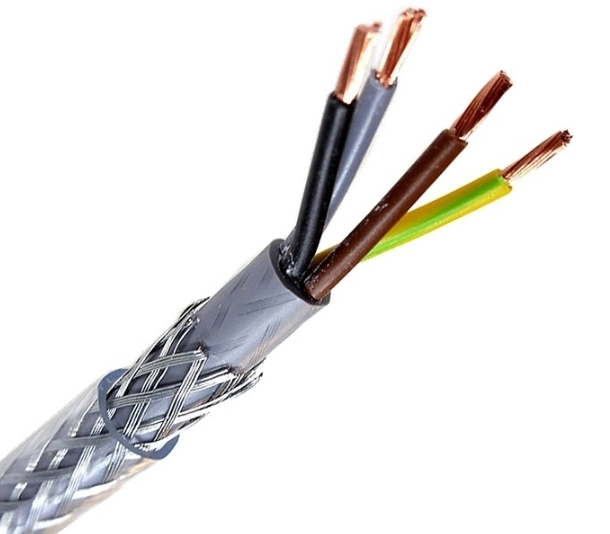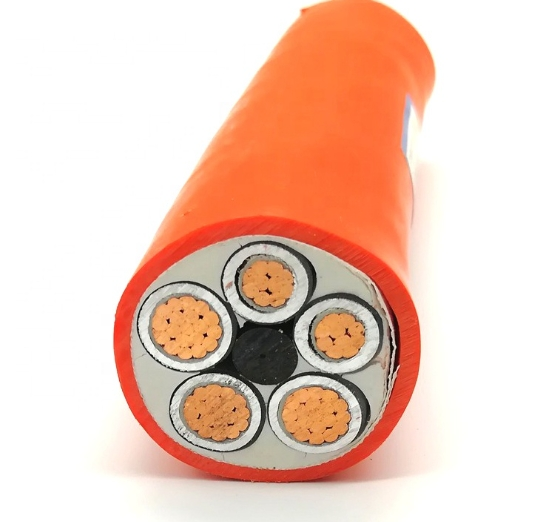Imagine wires and cables that deliver consistent performance from region to region – that’s what IEC cables have accomplished. IEC cables undergo stringent testing and are vital components in the global power ecosystem. Our detailed exploration is intended to offer a comprehensive iec cable definition, including their diverse types, and the essential standards that underpin their worldwide compatibility and reliable performance. Let’s get started on the topic.
What are IEC Cables?
IEC cable meaning cables that comply with the standards set by International Electrotechnical Commission, a globally recognized body that develops and publishes standards for electrical, electronic, and related technologies. Cables certified by the IEC are often seen as high-quality and reliable and play a vital role in facilitating global trade and cooperation within the power industry, reflecting the spirit of global standardization and interoperability.

The following section presents the specific IEC standards for electrical cables.
IEC standards for cable
There are thousands of IEC standards concerning various electrotechnical products, some of which are particularly applicable to cables, including:
| IEC 60092 | Electrical installation in ships |
|---|---|
| IEC 60227 | Polyvinyl chloride insulated cables of rated voltages up to and including 450/750 V |
| IEC 60228 | Conductors of insulated cables |
| IEC 60331 | Tests for electrical cables under fire conditions |
| IEC 60332 | Tests for electrical and optical fiber cables under fire conditions |
| IEC 60245 | Rubber insulated cables – Rated voltages up to and including 450/750V |
| IEC 60502 | Power cables with extruded insulation and their accessories – 1kV to 30kV |
| IEC 60702 | Mineral insulated cables and their terminations – up to 750V |
| IEC 60754-1 | Test on gases arising from burning cables. Part 1: halogen acid gas |
| IEC 60811-2-1 | Test for insulating and sheathing materials of electrical cables and optical cables. Section 1: ozone resistance, hot set and mineral oil immersion tests |
| IEC 60840 | Power cables with extruded insulation and their accessories – 30kV to 150kV |
| IEC 61034 | Measurement of smoke density of cables burning under defined conditions |
| IEC 61158 | Digital data communications for measurement and control. Fieldbus cables for industrial control systems |
These standards define cable construction, performance, and safety parameters, and can be used to classify cables accordingly. Keep scrolling down
What are the types of IEC cables?
IEC cables serve various applications and environments. The common types include:
IEC 60502-1.
- Low voltage cable: below 1kv. Typically used in fixed installations such as distribution networks, industrial applications, and buildings to transmit electricity with high reliability and safety in low voltage applications.
- Medium voltage cable: 3.6 kV to 35 kV, typically used in utilities, industrial plants, and for connections between substations and other high energy-demand applications.
IEC 60227 House Wiring.
- BV: Single, solid copper conductor with PVC insulation, ideal for fixed installations like building wiring or internal wiring in electrical equipment due to their rigidity and durability.
- BVR: Stranded copper conductor with PVC insulation, offering greater flexibility, making them suitable for applications where bending and movement are required, such as in control panels and movable equipment.
- 1.5mm cable: Ideal for lamps and switches.
- 2.5mm cable: For electrical outlets and small appliances in the homes and offices.
IEC 60227-5.
- RVV: 450/750V. Commonly used for portable appliances and tools flexible cable.

IEC 61158.
- Control cable: Suitable for transmitting control signals in various industrial settings and for connecting instruments and control stations.
IEC 60227-7.
- RVVP: Copper Core PVC Insulated and Sheathed Shielded Flexible Wire, the shield provides additional protection against electromagnetic interference, making it suitable for environments where signal integrity is critical.

IEC 60245-3.
- YC cable: Heavy-duty flexible rubber cable for harsh industrial environments like construction and mining.
IEC 60245-6.
- Welding Cable: Transmit high currents between the welding machine and welding tool.
Understanding these types allows for better selection and application in various electrical and electronic setups. And apart from these, other types such as silicone cables and submersible cable also available. And it’s worth noting that for cables that come with connectors, iec 60320 defines the types and configurations of connectors to ensure compatibility.
Bottom Line.
All in all, IEC cables represent the integration of global electrical standards, ensuring uniform, safe, and efficient power transmission between continents. From the simplicity of low-voltage house wiring to the complexities of heavy-duty industrial settings, these cables consistently maintain the highest quality standards. They are instrumental in the efficient and reliable operation of diverse electrical and electronic systems globally. As technological progress accelerates, the role of standardized, superior-quality components like IEC cables becomes increasingly vital. They are key to ensuring not only the safety and efficiency of electrical systems but also their interoperability in our interconnected world.

For your sourcing needs, you can turn to ZW Cable, a distinguished provider in the cable manufacturing industry that offers a diverse array of IEC and BS standards cables that are also ISO, CE, and SGS approved. With efficient global distribution and competitive pricing, ZW Cable is a valuable partner for domestic and international cable needs and can offer tailor-made solutions and expert consultancy.






